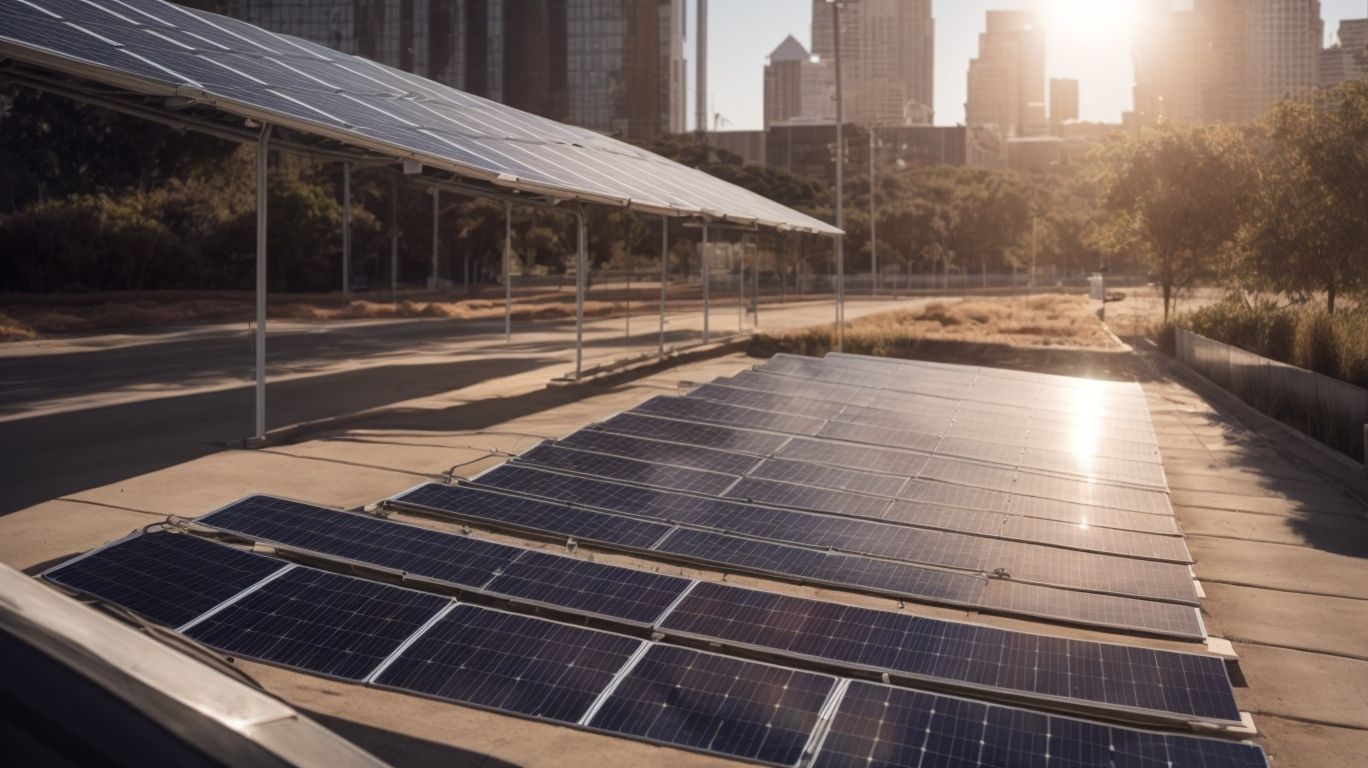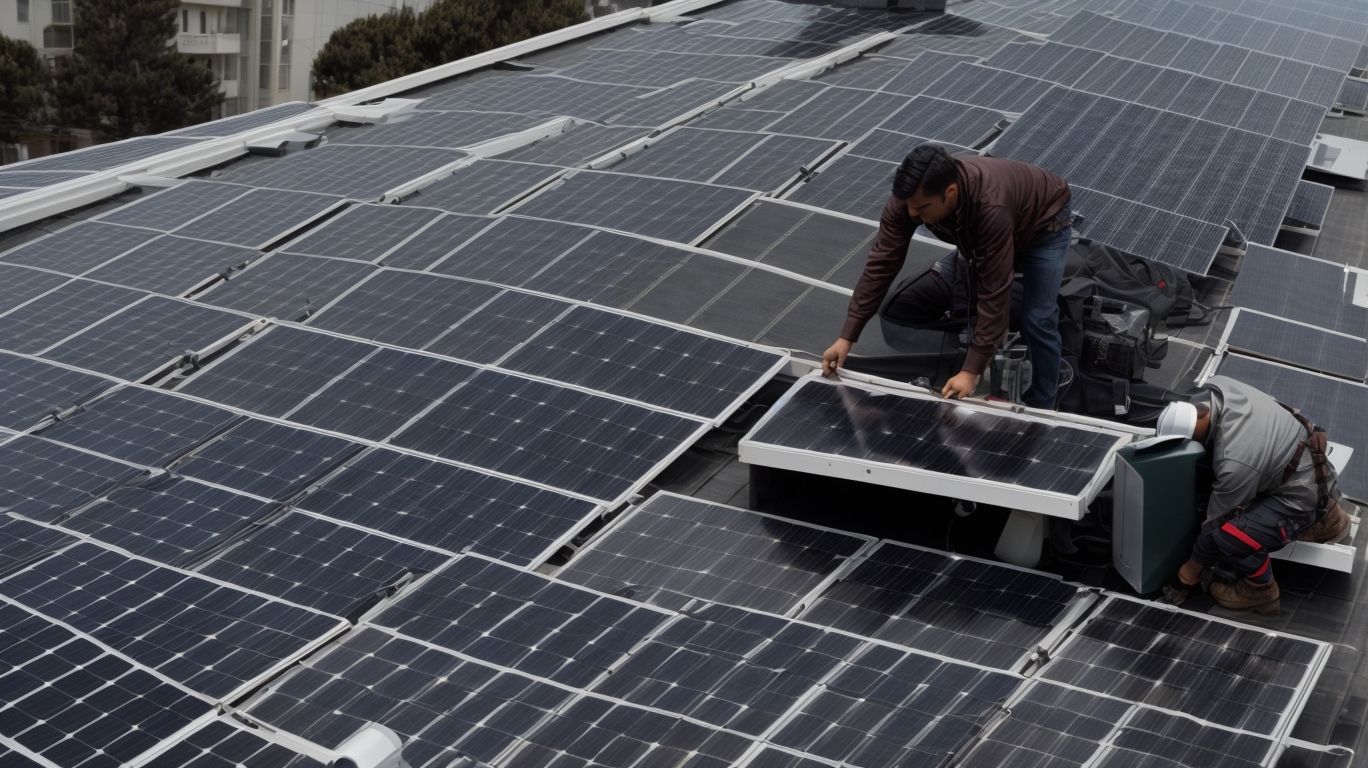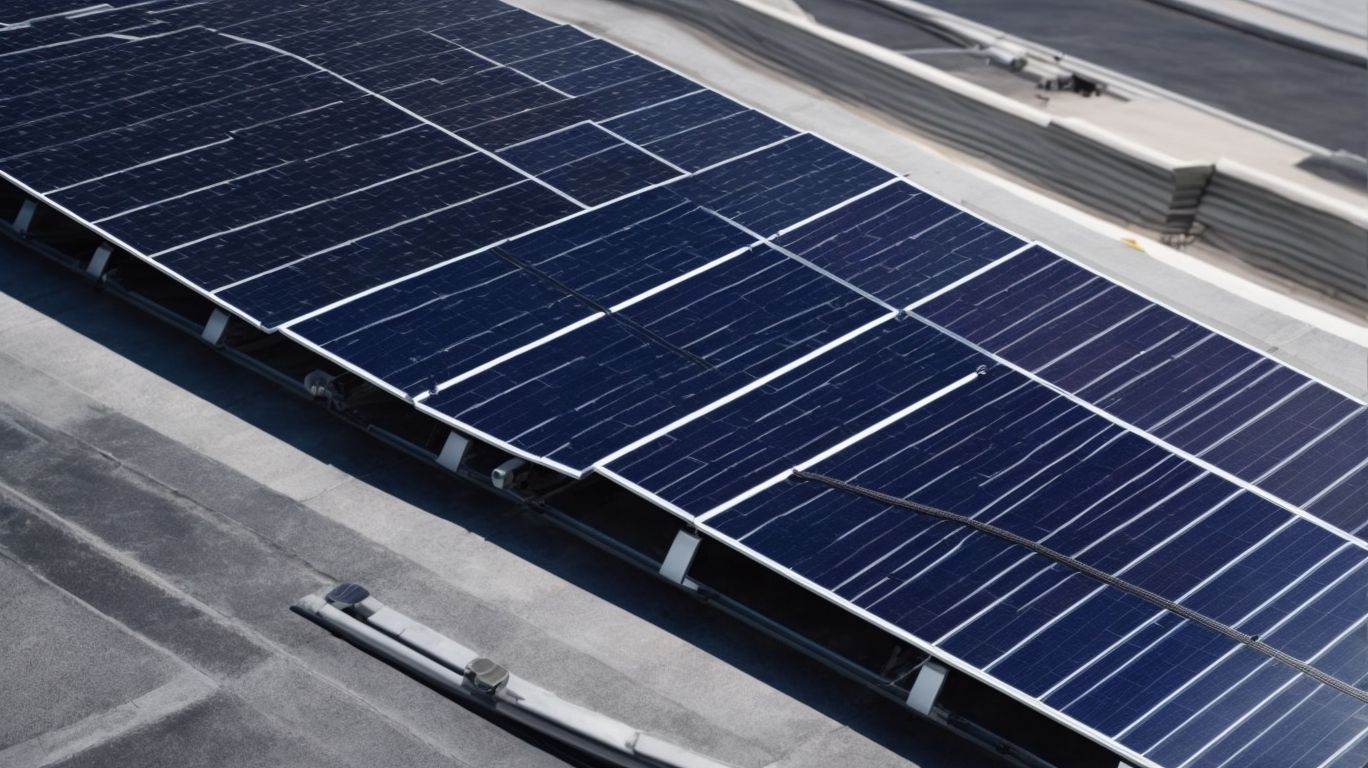
Advantages of Ground-Mounted Solar Panel Supports in SF
Ground-mounted solar panel supports offer a range of benefits for those looking to harness solar energy.
From flexibility in location to easy installation and maintenance, these supports are a cost-effective and efficient option for energy production.
In this article, we will explore the advantages of ground-mounted solar panel supports, the different types available, and how to choose the right one for your specific needs.
Whether you are considering fixed-tilt systems or dual-axis tracking systems, understanding the factors to consider will help you make an informed decision for your solar energy setup.
What Are Ground-Mounted Solar Panel Supports?
Ground-Mounted Solar Panel Supports are structures designed to securely hold solar panels on the ground, providing a stable foundation for solar energy systems.
Unlike roof-mounted systems, ground-mounted solar panel supports are ideal for areas with limited roof space or when the roof is not suitable for solar panel installation. These supports offer flexibility in panel placement, allowing for optimal sun exposure throughout the day, leading to increased energy production. Ground-mounted structures are easier to access for maintenance and cleaning, simplifying upkeep tasks.
Another advantage of these supports is their ability to be adjusted for optimal tilt angles, maximizing energy efficiency based on the location’s geographical position.
How Do Ground-Mounted Solar Panel Supports Work?
Ground-Mounted Solar Panel Supports work by anchoring solar panels securely to the ground, ensuring optimal sunlight exposure for efficient energy production.
These supports are typically made of durable materials like aluminum or steel, designed to withstand various weather conditions. The installation process involves digging holes for the supports, securing them in place, and then mounting the solar panels on top. The angle and orientation of the supports are crucial in maximizing sunlight exposure throughout the day, ensuring that the panels capture as much solar energy as possible. By properly positioning the panels using these supports, solar energy generation can be significantly increased, making them a vital component of solar power systems.
What Are the Advantages of Ground-Mounted Solar Panel Supports?
Ground-Mounted Solar Panel Supports offer numerous advantages, including flexibility in location, easy installation and maintenance, higher energy production, cost-effectiveness, and versatile design options.
One of the key advantages of ground-mounted solar panel supports is their ability to maximize energy production. By being placed on the ground, they can be easily positioned for optimal sun exposure throughout the day, ensuring efficient conversion of sunlight into electricity. This increased energy production not only boosts the overall performance of the renewable energy system but also enhances its sustainability by harnessing more clean energy. The accessibility of ground-mounted solar panels simplifies maintenance tasks, leading to improved system longevity and reliability.
Flexibility in Location
Flexibility in location is a key benefit of ground-mounted solar panel supports, allowing installations in various regions such as California to harness abundant sunlight for energy production.
This adaptability enables solar panels to be strategically placed in areas with optimal sunlight exposure, maximizing energy production potential. By analyzing factors like terrain slope, shading from nearby structures, and local regulatory requirements, installers can make informed decisions on the placement of solar arrays.
In addition, ground-mounted supports offer versatility in terms of scalability, making it easier to expand solar installations as energy needs grow. This level of flexibility empowers homeowners and businesses to make the most of their solar investments, ensuring long-term sustainability and cost-effectiveness.
Easy Installation and Maintenance
The ease of installation and maintenance associated with ground-mounted solar panel supports streamlines the process, enhancing overall system efficiency and leveraging advanced technology for monitoring.
These supports provide a stable foundation for solar panels, requiring minimal groundwork and facilitating quick setup. Advancements in support structures now allow for easy adjustment according to the panel orientation for maximum sunlight exposure. Monitoring capabilities integrated into the supports offer real-time data on system performance, enabling operators to make prompt adjustments for optimal efficiency. Regular maintenance, such as cleaning and inspection, is crucial to ensure longevity and peak performance of the system, with many supports designed to simplify these tasks.
Higher Energy Production
Ground-mounted solar panel supports enable higher energy production due to increased efficiency in capturing solar irradiance, resulting in enhanced sustainability and energy savings.
These supports are strategically designed to optimize the exposure of the solar panels to sunlight, thereby maximizing the conversion of solar energy into electricity. By aligning the panels at the ideal angle and orientation, the system can generate more power throughout the day.
This increased efficiency in energy conversion not only benefits the environment by reducing carbon emissions but also translates into tangible cost savings for homeowners and businesses. The enhanced performance ratios achieved through ground-mounted supports contribute to a more reliable and sustainable energy source.
Cost-Effective
Ground-mounted solar panel supports are a cost-effective renewable energy solution, offering economic advantages through incentives, tax benefits, and long-term savings on electricity bills.
By opting for ground-mounted solar panel supports, individuals and businesses can take advantage of various financial incentives, such as rebates and grants, which significantly reduce the upfront installation costs. These setups often qualify for federal and state tax credits, further lowering the overall investment required.
Over time, the return on investment potential of ground-mounted systems becomes evident, as they continue to generate electricity at a stable rate without incurring additional costs. This makes them a lucrative option for both residential and commercial applications, providing a reliable and sustainable source of energy while reducing dependency on non-renewable resources.
Versatile Design Options
Ground-mounted solar panel supports provide versatile design options that blend engineering excellence with aesthetics, enhancing property value and visual appeal while promoting sustainable energy practices.
These supports offer a wide range of engineering considerations such as tilt angles, foundation types, and material choices, allowing for optimal performance and structural integrity.
The aesthetic enhancements can complement the surrounding landscape, harmonizing the overall design of the property.
Studies have shown that properties with visually appealing solar installations tend to have higher resale values, making ground-mounted supports a strategic investment for homeowners looking to increase the value of their property while reducing their carbon footprint.
What Are the Types of Ground-Mounted Solar Panel Supports?
Ground-Mounted Solar Panel Supports come in various types, including fixed-tilt systems, seasonal tilt systems, single-axis tracking systems, and dual-axis tracking systems, each offering unique benefits and applications.
- Fixed-tilt systems are a popular choice for their simplicity and cost-effectiveness, ideal for installations in locations with consistent sun exposure.
- Seasonal tilt systems allow for adjusting the angle of panels throughout the year, optimizing energy production in different seasons.
- Single-axis tracking systems follow the sun’s east-west path, maximizing energy generation, particularly in areas with varying sunlight angles.
- Dual-axis tracking systems offer the highest efficiency by tracking both the sun’s daily and seasonal movements, making them suitable for environments where maximum output is crucial.
Fixed-Tilt Ground-Mounted Systems
Fixed-tilt ground-mounted systems maintain a constant tilt angle for optimal solar panel orientation, maximizing sunlight exposure and simplifying installation processes.
This consistency in orientation not only ensures that solar panels receive sunlight at the most effective angle throughout the day, but it also significantly boosts energy production efficiency. By efficiently capturing sunlight, these systems generate more electricity, making them a cost-effective choice for both residential and commercial applications. The streamlined installation procedures associated with fixed-tilt systems result in shorter project timelines and lower labor costs, providing an additional advantage for those looking to adopt solar energy solutions.
Seasonal Tilt Ground-Mounted Systems
Seasonal tilt ground-mounted systems adjust the tilt angle of solar panels based on the sun’s position throughout the year, optimizing sunlight exposure and energy generation through tracking systems.
This adaptation allows the panels to capture sunlight more efficiently, especially during the winter months when the sun is lower in the sky. By adjusting the tilt angle, these systems can maximize the amount of energy harvested, ultimately increasing the overall performance of the system. Utilizing tracking technology further enhances this efficiency by ensuring that the panels are always facing the sun at the optimal angle. The combination of seasonal tilt adjustment and tracking technology creates a dynamic system that continuously optimizes energy capture, making it a valuable asset for renewable energy production.
Single-Axis Tracking Ground-Mounted Systems
Single-axis tracking ground-mounted systems follow the sun’s path along one axis, increasing energy efficiency by adjusting panel angles to account for changing weather conditions and sunlight exposure.
This type of solar tracking system allows solar panels to capture more sunlight throughout the day compared to fixed systems, thus optimizing energy production. By tilting and rotating the panels to directly face the sun, the efficiency of converting sunlight into electricity is significantly enhanced. In addition, single-axis trackers are equipped to adapt to various weather patterns, ensuring maximum output even during cloudy or partially shaded conditions. This adaptability leads to improved overall performance and output in comparison to stationary solar arrays.
Dual-Axis Tracking Ground-Mounted Systems
Dual-axis tracking ground-mounted systems continuously align solar panels along both horizontal and vertical axes, maximizing the performance ratio and leveraging innovative technology for enhanced energy production.
This advanced feature allows the panels to accurately follow the sun’s movement throughout the day, ensuring optimal sunlight exposure at all times. By precisely adjusting the panel alignment along both axes, these systems significantly increase the energy output compared to fixed-tilt systems. The dual-axis tracking technology not only improves overall energy efficiency but also offers greater flexibility in various weather conditions. With the ability to adapt to changing sunlight angles, these systems can generate more electricity, making them an ideal choice for maximizing solar energy harvest.
How to Choose the Right Ground-Mounted Solar Panel Support for Your Needs?
Choosing the right ground-mounted solar panel support involves considering factors such as location and terrain, energy needs, and budget constraints to ensure optimal system performance and cost-effectiveness.
- Selecting an appropriate location for your solar panel system is crucial as it directly impacts the amount of sunlight received, which in turn affects energy production. Evaluating the terrain helps determine the type of foundation needed for stability and structural integrity.
- Understanding your energy requirements will guide you in sizing the system to meet your specific needs, whether residential, commercial, or industrial. Careful financial planning ensures that the chosen support system aligns with your project goals and delivers the desired outcomes efficiently.
Location and Terrain
The selection of a ground-mounted solar panel support should account for the specific location and terrain characteristics, considering factors like topography, shading, and sunlight exposure for optimal energy production.
When choosing a support system for solar panels, it’s crucial to analyze the topographical features of the area to determine the most suitable installation approach. Understanding the shading patterns throughout the day is also key in maximizing the panels’ exposure to sunlight. By taking into account the terrain suitability, such as slope and orientation, you can ensure that the solar panels are positioned to capture sunlight efficiently. These location-specific considerations play a vital role in determining the overall performance and effectiveness of the solar energy system.
Energy Needs
Determining energy needs is crucial for choosing the right ground-mounted solar panel support, factoring in considerations such as energy consumption patterns, demand response requirements, and long-term energy efficiency goals.
Understanding your energy consumption profile is essential in evaluating the capacity and positioning of your solar panel system. By analyzing when and how you use energy most efficiently, you can optimize your system’s performance.
Incorporating demand response capabilities allows you to align your energy usage with grid demands, potentially reducing costs and enhancing overall system reliability. Implementing strategies for energy efficiency, such as smart energy management systems and efficient appliances, can further maximize the benefits of your solar panel installation, providing long-term sustainability and savings.
Budget
Budget considerations play a significant role in choosing the right ground-mounted solar panel support, balancing installation costs, maintenance expenses, and economic advantages to ensure a financially viable and sustainable investment.
When allocating the budget for a solar project, it’s essential to strategize cost-effectively. By assessing different installation options, such as DIY setups versus professional installations, one can optimize expenses. Factoring in long-term economic benefits like reduced electricity bills and potential tax incentives can further solidify the decision-making process. It’s crucial to weigh these financial aspects carefully to make informed choices that not only fit the current budget constraints but also offer substantial savings and returns over the project’s lifespan.




No Comments